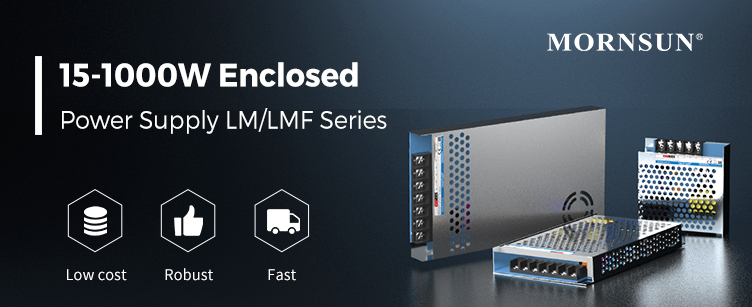Power supply reliability plays a key role in ensuring stable performance and a long lifespan for any electrical equipment. Any mistakes or fallacies in the design of an electric circuit can result in potential damage to the equipment, unstable power supply, or even impact the safety of the people involved in its management.
The reliability of a power supply is affected by a series of factors, including various forms of stress as well as voltage fluctuations and a too complex design. For more details on each of these factors, please refer to this article that we have recently published on the topic.
In this article, we will instead focus on the design-related factors that can impact a power supply’s reliability, including the series of tests and verification steps that can be performed to ensure a more steady power supply.
The Impact of Design on a Power Supply’s Reliability
Reliable supply design is not a guessing game. The design of power supplies for higher reliability involves redundancy, circuit protection, and remote systems management.
Many factors are to be considered when designing a reliable power supply circuit. A combination of different elements often is the best solution to ensure reliable operation of a power supply. Specifically, electrical engineers should consider how to protect power supplies from the effects of wide temperature changes and the different types of stresses by which they are affected.
Designing a power supply circuit is already a complex task whose difficulty is heightened by the fact that there’s no typical application. The exact power supply requirements can vary greatly depending on the exact application for which it is designed.

Generally speaking, the paper design and topology of a power supply project should be robust and cautious, taking into account the effects of load and line transients. It is also important to carefully plan how to reduce power supply noise and determine the required minimum/maximum values of component parameters to ensure reliable operation. The layout must also accommodate the fact that most supplies are dealing with significant current flows, while also being affected by EMI.
Design engineers should also consider whether the supply is designed in a way that it can be assembled without compromising either the design or its components. A robust power supply design is only half of the solution for higher reliability. The same power supply also must be compatible with the manufacturing process to ensure that it can be designed fully according to the specifications called out by the designer.
The Tests to Perform for Higher Power Supply Reliability
Electrical engineers can design their power supply circuits by taking into consideration their insulation, moisture absorption levels, possible current leakages, and the effects of electromagnetic interference. However, design is only one facet of the issue, as it relies mostly on the prediction of possible circumstances.
Another essential option for higher power supply reliability is performing several rounds of rigorous testing. MORNSUN’s power supply reliability testing process is as comprehensive as it is meticulously performed. Below we will review some of the aspects that should be assessed and measured to ensure a power supply reliability level up to standards.
The MORNSUN power supply reliability test is divided into four sections: environmental adaptability, mechanical performance, electrical performance, and acceleration class. Each step is essential in confirming whether the power supply can not only provide reliable power but also adapt effectively to the environment in which it’s used.

- Environmental adaptability
Power supplies are often employed in strategic equipment which can be placed in outdoor environments. As for all outdoor applications, power supplies will be then affected to different degrees by considerable temperature changes, wide gaps in humidity levels, and other factors.
This part of a power supply’s reliability test includes the following test items:
- Hot Temperature Storage (H/T Storage) Test
- Low-Temperature Storage (L/T Storage) Test
- Hot Temperature Burning (H/T Burning) Test
- Steady-State Damp-Heat
- High Temperature & Humidity Test
- Alternating Temperature & Humidity Test
- Temperature Cycle Test
- Temperature Shock Test
- Low-Pressure Test
- High-Temperature Low Pressure (H/T Low Pressure) Test
- Low-Temperature Low Pressure (L/T Low Pressure) Test
- Reflow-Soldering Test
- Wave-Soldering Test
- Salt Spray Test
- Mechanical performance
The mechanical aspect of a reliability test focuses on assessing the power supply’s resistance to mechanical shocks. This part of the test also checks for the power supply’s resilience against any mishaps that could happen during its transportation, handling, and expected use.
This part of a power supply’s reliability test includes the following test items:
- Sine Vibration Test
- Random Vibration Test
- Drop Test
- Mechanical Shock Test
- Terminal Strength Test
- Solderability Test
- Electrical performance
Power supplies represent the heart of any electric equipment. For how essential they are, they also need to withstand a series of electric power supply interferences, including electrical spikes, harmonic frequencies, as well as unintended dips and surges. Besides testing the electrical performance of a power supply, designers can also perform more specific EMS and EMI testing.
This part of a power supply’s reliability test includes the following test items:
- Input ON/OFF Test
- Output Short Circuit Test
- Audio Noise Test
- Tidal Level Test
- Acceleration class
This part of the testing process is used to expose design and process weaknesses, allowing you to improve your power supply prior to its actual application. By applying stresses to a power supply, it’s possible to determine its destruct limit and provide more detailed information on how to make it more durable and resistant.
This part of a power supply’s reliability test includes the following test items:
- Power Cycling Test (PCT) Test
- Highly Accelerated Life Test (HALT) Test
- Highly Accelerated Stress Screening (HASS) Test
- Temperature & Humidity Vibration Test
MORNSUN’s Power Supply Solutions
When thinking of high power supply reliability, the design factors to consider are varied and complex. Selecting an experienced manufacturer is already half of the solution, especially when you can rest assured of the high quality and reliability of the power solutions it can provide.
MORNSUN is the right solution for designers looking for a reliable power supply manufacturer. With over 23 years of experience, MORNSUN has unparalleled in-depth knowledge of the intrinsic and extrinsic factors affecting a power supply’s reliability.
In particular, MORNSUN offers a wide variety of SMPS power modules that you can implement in your applications for fast and easy performance.
Besides undergoing EMS/EMI testing and rigorous product reliability tests, our products comply with universal standards of quality (including IEC/EN/UL62368, IEC/EN60335, IEC/EN61558, and GB4943). The reliability of our solutions is guaranteed by our quality-first and test-driven approach to power supply design and manufacturing.
For more information, please visit www.mornsun-power.com












